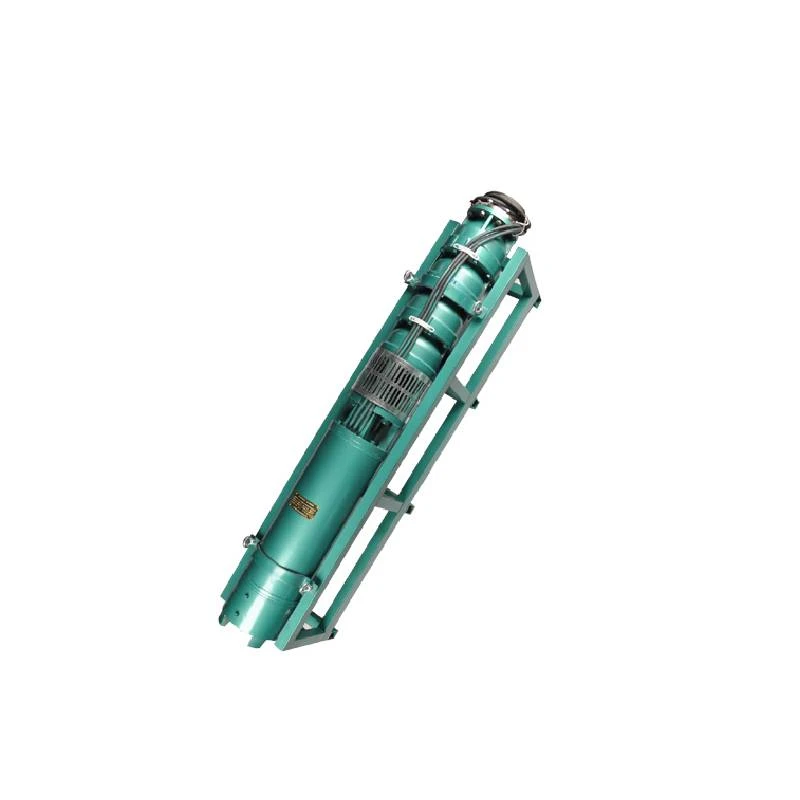Nov . 15, 2024 17:08 Back to list
what is submersible pump
What is a Submersible Pump?
A submersible pump is a type of pump that is designed to be submerged underwater, making it a vital component in various applications, including irrigation, drainage, and wastewater management. Unlike other pumps that operate above ground, submersible pumps are sealed in a waterproof casing and are typically driven by an electric motor located at the pump's top or sometimes integrated into the unit. This design enables them to operate efficiently while completely submerged, minimizing issues related to cavitation and reducing the risk of pump failure due to water exposure.
The operation of a submersible pump is relatively straightforward. When the pump is submerged, the motor powers an impeller that draws fluid into the pump and pushes it upwards through a discharge pipe. This process creates a pressure differential that allows the pump to lift water from lower depths to a required height, whether it be for draining a flooded area or supplying water for agricultural purposes.
Key Features and Advantages
One of the primary features of submersible pumps is their ability to minimize space and installation complexities. Since they operate underwater, there is no need for additional priming equipment or elaborate pressure systems that are often necessary with above-ground pumps. These pumps can be directly placed in the fluid they are intended to move, making them ideal for applications involving deep wells or underground reservoirs.
Submersible pumps also exhibit high energy efficiency, primarily due to their design. Because the motor is submerged and the pump operates under water pressure, the energy losses that typically occur with surface pumps are significantly reduced. Additionally, their sealed design helps protect internal components from corrosion, contamination, and cavitation, thus prolonging the lifespan of the pump.
Applications of Submersible Pumps
Submersible pumps are utilized in a wide range of applications. In the agricultural sector, they are commonly used for irrigation purposes, drawing water from underground sources and distributing it across farmland. This assists in optimizing crop yields and ensuring efficient water usage.
what is submersible pump

In municipal applications, submersible pumps play a crucial role in wastewater treatment plants where they pump sewage and effluent to the treatment facilities. These pumps are also essential for managing stormwater drainage, preventing flooding in urban areas during heavy rainfall.
Furthermore, submersible pumps are widely used in construction projects where dewatering is necessary. They effectively remove excess water that can hinder construction activities, enabling builders to work in dry conditions.
Considerations When Choosing a Submersible Pump
When selecting a submersible pump, several factors should be considered to ensure optimal performance. Pump specifications such as flow rate, total dynamic head (TDH), and the type of fluid being pumped are crucial. It is essential to match the pump's capabilities with the demands of the specific application to ensure efficiency and avoid potential mechanical failure.
Furthermore, the material construction of the pump is significant, particularly when dealing with abrasive, corrosive, or viscous fluids. Stainless steel and high-quality plastic are often preferred for their durability and resistance to wear.
Conclusion
In summary, submersible pumps are indispensable tools in various fields, providing efficient and reliable fluid movement for irrigation, drainage, and wastewater management. Their submerged design not only enhances performance but also reduces installation challenges. When carefully selected and properly maintained, submersible pumps can deliver outstanding service for many years, making them a worthwhile investment for any application that requires effective fluid management.
-
Submersible Water Pump: The Efficient 'Power Pioneer' of the Underwater World
NewsJul.01,2025
-
Submersible Pond Pump: The Hidden Guardian of Water Landscape Ecology
NewsJul.01,2025
-
Stainless Well Pump: A Reliable and Durable Pumping Main Force
NewsJul.01,2025
-
Stainless Steel Submersible Pump: An Efficient and Versatile Tool for Underwater Operations
NewsJul.01,2025
-
Deep Well Submersible Pump: An Efficient 'Sucker' of Groundwater Sources
NewsJul.01,2025
-
Deep Water Well Pump: An Efficient 'Sucker' of Groundwater Sources
NewsJul.01,2025
-
 Submersible Water Pump: The Efficient 'Power Pioneer' of the Underwater WorldIn the field of hydraulic equipment, the Submersible Water Pump has become the core equipment for underwater operations and water resource transportation due to its unique design and excellent performance.Detail
Submersible Water Pump: The Efficient 'Power Pioneer' of the Underwater WorldIn the field of hydraulic equipment, the Submersible Water Pump has become the core equipment for underwater operations and water resource transportation due to its unique design and excellent performance.Detail -
 Submersible Pond Pump: The Hidden Guardian of Water Landscape EcologyIn courtyard landscapes, ecological ponds, and even small-scale water conservancy projects, there is a silent yet indispensable equipment - the Submersible Pond Pump.Detail
Submersible Pond Pump: The Hidden Guardian of Water Landscape EcologyIn courtyard landscapes, ecological ponds, and even small-scale water conservancy projects, there is a silent yet indispensable equipment - the Submersible Pond Pump.Detail -
 Stainless Well Pump: A Reliable and Durable Pumping Main ForceIn the field of water resource transportation, Stainless Well Pump has become the core equipment for various pumping scenarios with its excellent performance and reliable quality.Detail
Stainless Well Pump: A Reliable and Durable Pumping Main ForceIn the field of water resource transportation, Stainless Well Pump has become the core equipment for various pumping scenarios with its excellent performance and reliable quality.Detail
